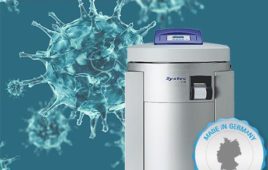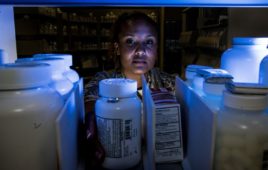During the November, 2011 ASTM meetings in Tampa, FL, we observed a number of trends, particularly in the standards and guidance documents that impact medical device manufacture and maintenance. The ongoing presence and constructive comments by individuals within the FDA has continued. Their input will be invaluable in helping industry to develop documents that assure excellent surface quality and contamination control and that are protective of the public. As illustrations, we are highlighting a few newer standardization efforts.
DESIGN FOR CLEANABILITY
The ability to clean a product depends in part on the way it is designed. Critical cleaning is challenging during the initial manufacturing and fabrication process. Close spacing, blind holes, overall miniaturization, and the proliferation of materials of construction mean that solvency, wettability, cleaning forces, and their impact on materials of construction must be carefully balanced. With reusable medical devices, the importance of design consideration is especially important in that efficacy of cleaning must be reproducible by untold numbers of technicians in hundreds, perhaps thousands of high-stress hospital settings. A new work effort currently under discussion by ASTM will provide helpful guidance for those involved in manufacture of reusable medical devices.1 The document is meant to address the situational challenges of cleaning reusable devices. “Cleanability” is an important concept. The idea is that while many objects can be cleaned, the difficulty and general headache factor must be minimized. This includes considering how the device might be readily taken apart as well as where the difficulty of cleaning (or risk of not sufficiently cleaning) might be so high that certain parts of the device should not be reused.
TEST SOILS
Standardized testing of reusable devices requires standardized soils, ones that emulate in-use situations. Another current ASTM effort2 involves developing appropriate tests soils. In addition to emulating actual in-use conditions, the soils must also be readily replicated and they must be readily stabilized. In addition, the method of soil application and treatment has to be defined so as to emulate what might actually be expected in a hospital situation where soils might not be removed immediately. Those who have experience in successful use of particular test soils may want to become involved in this group; suggestions for additional test soils to be included would be helpful.
CLEANING DURING INITIAL FABRICATION
A third new effort involves validation of cleaning lines.3 This is a particularly challenging effort in that the document is meant to encompass the manufacture of both traditional and combination devices.4 The worlds of medical devices, pharmaceuticals, and biologicals often have different approaches. The terminology of those fields must be harmonized with each other and with standard ASTM terminology as well. The guide to validating cleaning processes is expected to encompass such considerations as equipment design, process design and documentation, sampling, analytical techniques, and development of acceptable limits. The document is particularly intriguing in that, as a guidance document, it may use a risk assessment justification approach similar to ISO-10993- 17.5,6 Device manufacturers will need to address what constitutes adequate and appropriate cleaning in their specific application.
CLEANING AND CHICKENS
The standards being developed by ASTM generally fall into one of two categories. There are basic “how to” documents with specific recipes for setting up and performing a process or test. There are also guidance documents that suggest how to write the recipes; how to develop, maintain, and document the process and test protocols that can be used consistently. Part of the challenge is to develop standards for setting processes that are repeatable and documentable. At the same time, the standard should recognize that, due to variations in performance requirements, technological evolution, and materials, processes for various applications may differ.
This column is dedicated to the memory of a dear friend, colleague, and mentor. Dr. Shelley Ventura- Cohen, an extraordinary psychologist, reinforced her views by using wit. She told us an anecdote about her early attempts at cooking to illustrate the importance of direct, empirical observation. She was attempting to learn to prepare chicken using the wisdom found in an assortment of cookbooks. She found herself unable to proceed until an aunt suggested that she stop looking at the book and look at the chicken.7 She found this to be good advice; we agree. Medical devices are so complex and varied that a simple “how to” standard is no longer practical. Standards can no longer be cookbooks. Standards have evolved. Standards and guidance documents are now starting to tell us how to look at the chicken.
References
- ASTM Work Item WK31799, “Standard Practice/Guide for Designing Medical Devices for Cleanability.”
- ASTM Work Item WK33439, “Standard Practice/Guide for Standard test soils for validation of cleaning methods for reusable medical devices”
- ASTM Work Item WK33660, “Standard Practice/Guide for Validating Clean Lines for Medical Devices”
- B. Kanegsberg and E. Kanegsberg, “Two Challenges in Contamination Control of Combination Devices,” Controlled Environments Magazine, March 2008.
- “Biological evaluation of medical devices—Part 17: Establishment of allowable limits for leachable substances,” ISO10993-17
- B. Kanegsberg, E. Kanegsberg and D. Albert, “Toxicological Risk Assessment For Medical Devices—What is it?,” Controlled Environments Magazine, October, 2005.
- B. Kanegsberg, “Preface to the First Edition,” Handbook for Critical Cleaning, Second Edition, CRC Press, 2011.
Barbara Kanegsberg and Ed Kanegsberg, Ph.D. “The Cleaning Lady” and “The Rocket Scientist,” are independent consultants in surface quality including critical/precision cleaning, contamination control, and validation. They are editors of the expanded, updated two-volume second edition of “The Handbook for Critical Cleaning,” CRC Press. Contact BFK Solutions LLC, 310-459-3614; [email protected].



